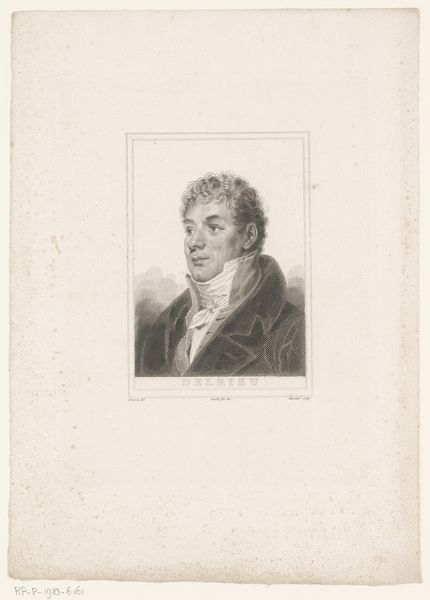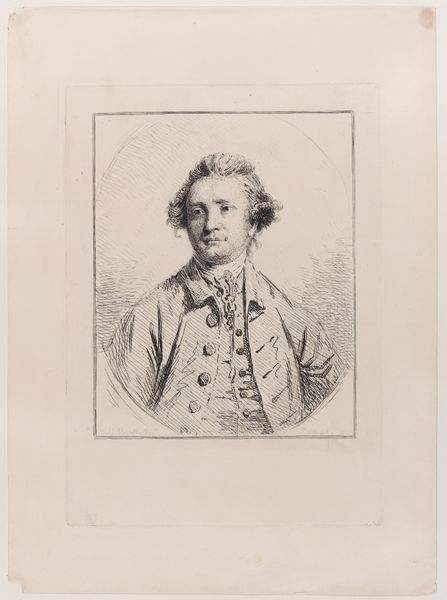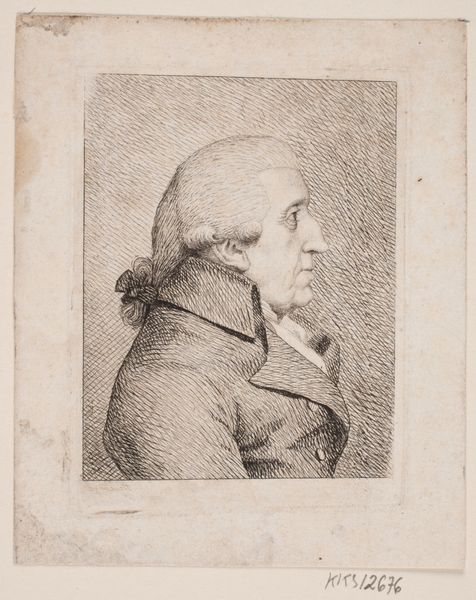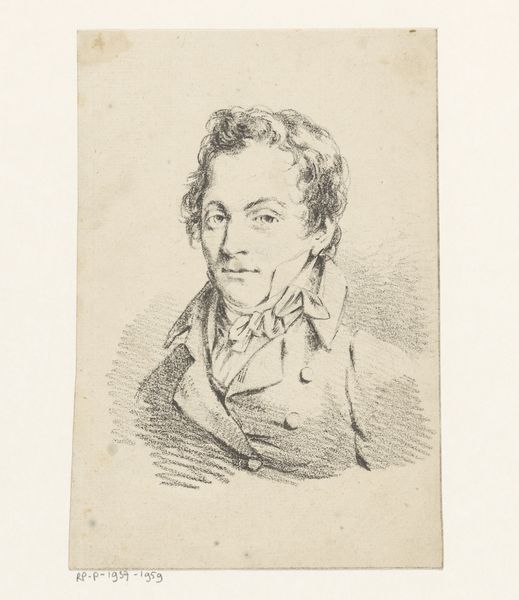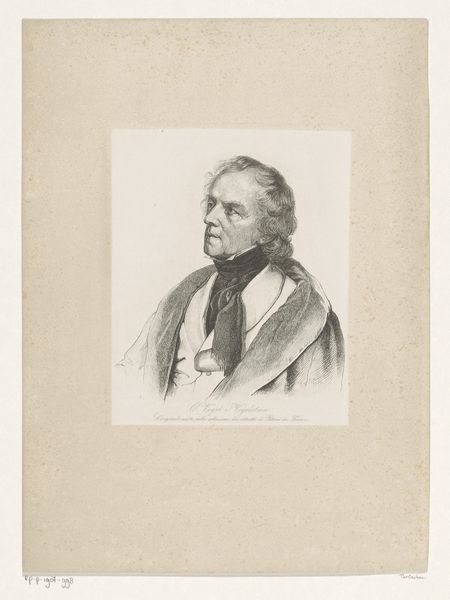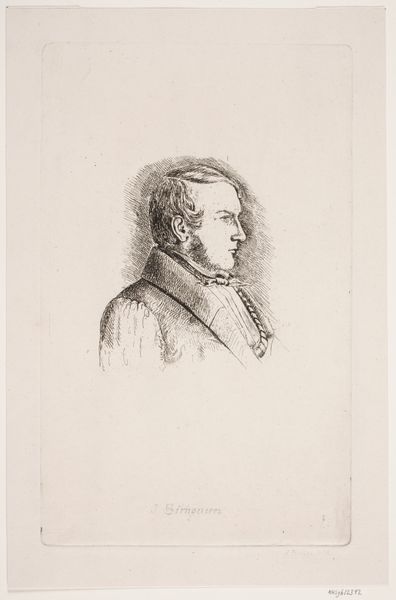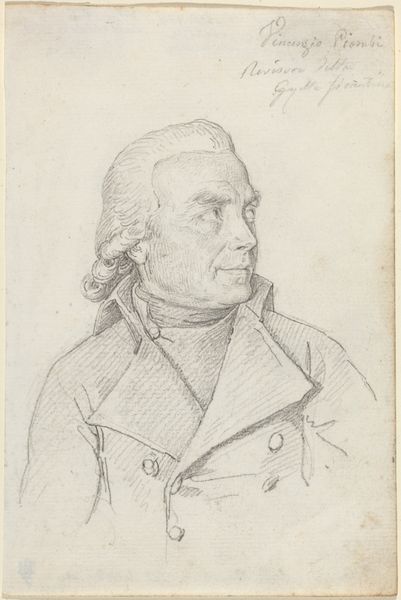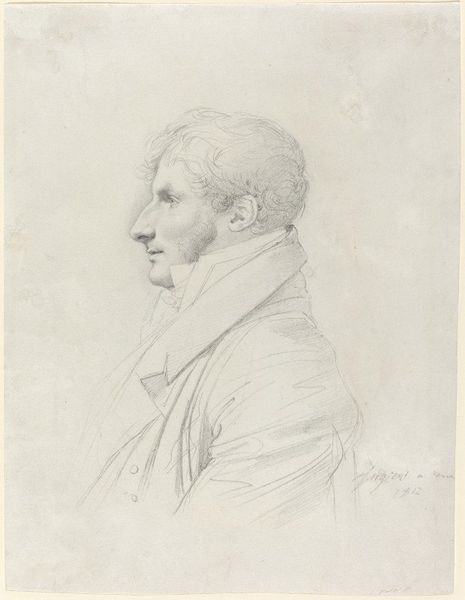
Portret, mogelijk zelfportret, van landschapsschilder Nicolas Didier Boguet 1793
0:00
0:00
drawing, print, etching, paper
#
portrait
#
pencil drawn
#
drawing
#
neoclacissism
# print
#
etching
#
pencil sketch
#
paper
#
pencil drawing
Dimensions: height 145 mm, width 95 mm
Copyright: Rijks Museum: Open Domain
Editor: This is an etching from 1793, titled "Portret, mogelijk zelfportret, van landschapsschilder Nicolas Didier Boguet" – roughly, “Portrait, possibly a self-portrait, of landscape painter Nicolas Didier Boguet.” The lines are so delicate, giving it a gentle, almost fragile feel. As a portrait, what does it say about the role of artists in society, especially around the time of the French Revolution? Curator: That's an insightful observation! Think about the social and political upheaval of 1793. The Neoclassical style, which we see reflected here, aimed to revive classical ideals of order and reason. Portraits, like this one, served a function beyond mere likeness; they were often used to project an image of virtue, status, and intellectual prowess. Considering the turbulent political context of the time, what statement do you think Boguet, as a landscape painter, might be making about the importance of art and artists? Editor: Maybe he’s aligning himself with the values of reason and order during a chaotic time, demonstrating the importance of landscape and classic values as relevant and powerful! This kind of image could almost serve as propaganda! Curator: Exactly! Now, look at the detail in the face – the sharp nose, the receding hairline, the composed expression. Artists were starting to depict themselves as thinkers, professionals contributing to the cultural landscape, rather than simply craftsmen. It moves away from purely aristocratic depiction. Do you see how that might affect the perception and status of artists? Editor: I do. It suggests a shift towards a more meritocratic view of artistic talent, linked to personal skill and intellect, not just patronage. I’ve never considered art quite that way before, especially within socio-political structures! Curator: And what did you find insightful or thought-provoking about considering the image’s impact within a political climate? Editor: Seeing how seemingly simple etchings were tools within a huge time of unrest. Art truly does permeate every area of society.
Comments
No comments
Be the first to comment and join the conversation on the ultimate creative platform.
